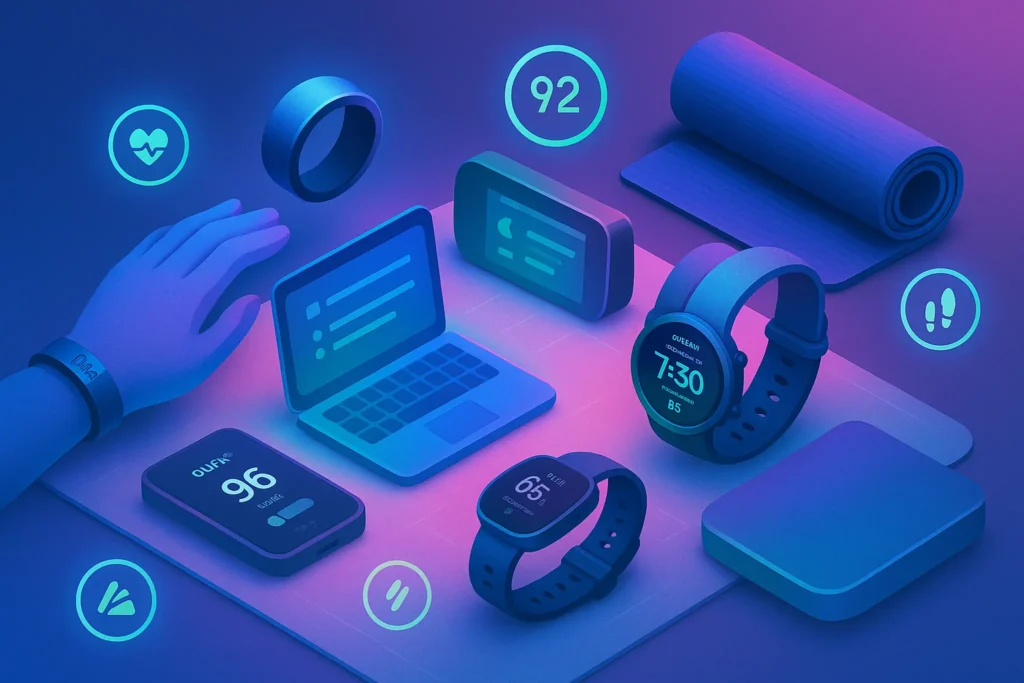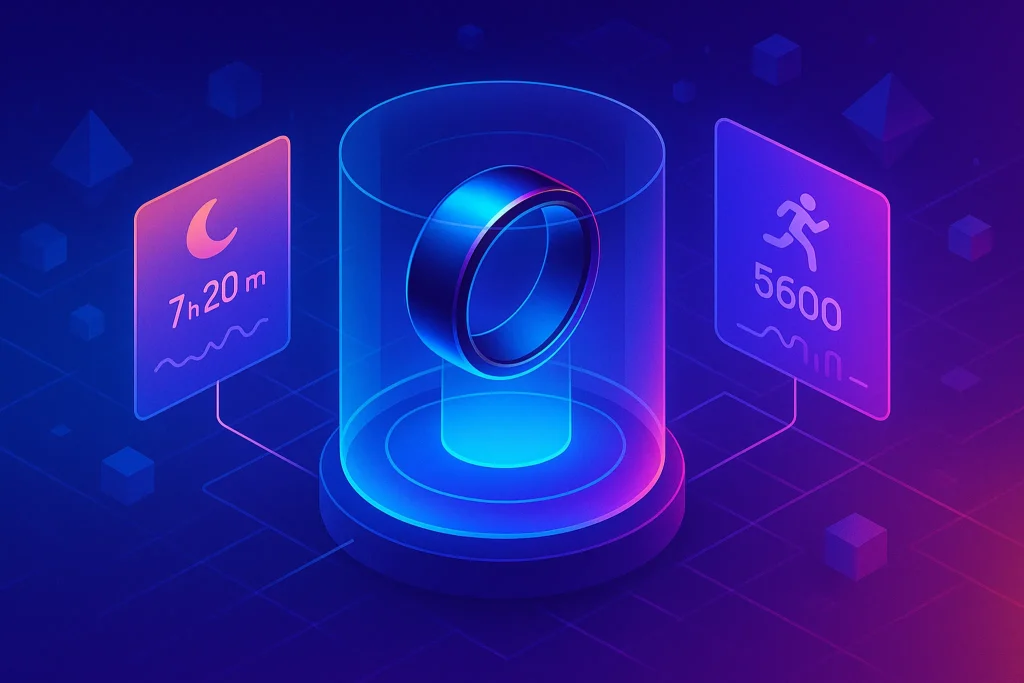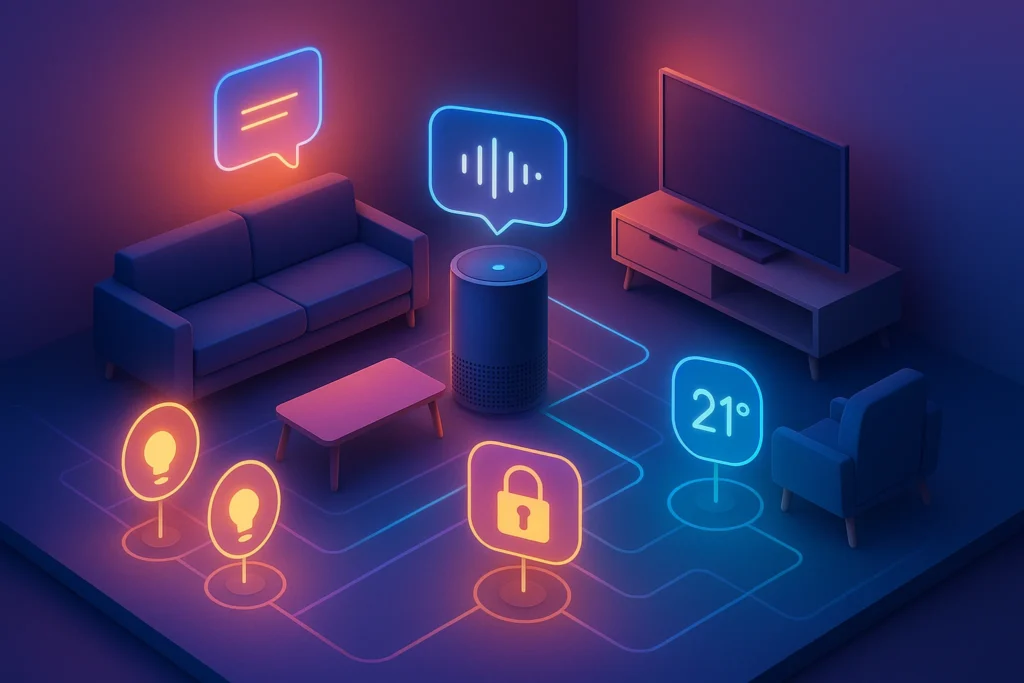-This post may contain affiliate links. If you click on one and make a purchase, I may earn a small commission at no extra cost to you.-
🔍 Introduction
Fitness isn’t just about sweat—it’s about insight. In 2025, the wearable tech world has exploded with devices that track heart rate variability overnight, analyze your workout form, and guide recovery. But which gear offers real value—for athletes, desk workers, or globe-trotting nomads? In this guide, we dig into top fitness tech—from Oura and Whoop to Garmin and smart scales—complete with practical use cases and comparisons. If you’ve been following our deep dive in Smart Rings That Track Sleep & Fitness – Full Comparison or exploring Wearable Tech, this post shows how to personally harness these tools wherever life leads you—even during remote Travel Tech adventures.
Fitness tech in 2025 is smarter, sleeker, and way more personalized. We’ve come a long way from counting steps—now you can track stress, recovery, oxygen levels, and even how ready your body is to train. The question isn’t whether you need a gadget, but which one matches your lifestyle.
In this post, we’ll break down the best fitness wearables and smart health tools—matched to real people: the gym-obsessed athlete, the desk-locked freelancer, and the constantly-moving digital nomad.
Ready to optimize your body the smart way? Let’s go.
💍 1. Oura Ring Gen 4 – The Silent Sleep & Recovery Coach
The Oura Ring is the most discreet yet powerful health tracker out there. It has no screen, no distractions—but provides deep, actionable insights into sleep quality, heart rate variability (HRV), temperature, and recovery. Gen 4 adds faster syncing, better sensors, and improved activity detection.
🧠 Use Case:
Digital Nomad On the Move
Leila, a 31-year-old freelance strategist, travels between Thailand and Spain every few weeks. Jet lag used to ruin her energy and workflow. Since using Oura, she tracks her recovery and uses its readiness score to shift workouts or postpone heavy workdays. It even noticed early signs of illness based on body temp fluctuations—before she felt symptoms.
✅ Why It’s Worth It:
-
Tracks readiness, not just steps
-
Excellent sleep analysis with personalized tips
-
7-day battery life
-
Lightweight, waterproof, and screenless for less distraction
🆚 Micro-Comparison: Oura Ring vs Fitbit Charge 7
Oura is better for passive, recovery-focused users. Fitbit is more interactive and fitness-driven. If sleep and stress management are your priorities, Oura wins.
💡 Nerd Tip: See our deep dive in Smart Rings That Track Sleep & Fitness – Full Comparison.
🏃 2. Fitbit Charge 7 – All-in-One Wellness on Your Wrist
Fitbit’s newest tracker is still one of the most balanced health wearables for everyday users. It offers 24/7 heart rate, advanced sleep scoring, stress management, blood oxygen tracking, and built-in GPS. It’s slim, affordable, and works with both Android and iOS.
🧠 Use Case:
Freelancer Behind the Desk
Mark, a 38-year-old copywriter, sits at his desk for hours and often forgets to move. Fitbit reminds him to stretch hourly, tracks light walks as active minutes, and nudges him to wind down when stress levels rise. He uses the guided breathing sessions between work blocks to stay centered.
✅ Why It’s Worth It:
-
Great balance of features and price
-
Week-long battery life
-
Sleek and non-intrusive design
-
Strong app ecosystem (especially Fitbit Premium)
🆚 Micro-Comparison: Fitbit Charge 7 vs Apple Watch 10
Fitbit wins on battery life and stress tools. Apple wins for smart features and ecosystem sync. Fitbit is perfect for focused wellness without tech overwhelm.
⌚ 3. Apple Watch Series 10 – Smartwatch Meets Personal Health Assistant
The Apple Watch 10 is no longer just a smartwatch. It now includes advanced health sensors for blood oxygen, ECG, temperature, and stress trends. The new AI-powered health insights and redesigned Siri make it feel more like a proactive assistant than a passive tracker.
🧠 Use Case:
Athletic Remote Worker
Jason is a hybrid worker who trains in CrossFit, takes Zoom meetings, and tracks macros. His Apple Watch tells him when to push or rest based on heart rate zones and recovery indicators. He uses it for quick calls, checking Slack during warm-ups, and logging workouts automatically via Apple Fitness+.
✅ Why It’s Worth It:
-
Real-time health alerts
-
Full app and notification integration
-
Gorgeous always-on display
-
Fast charging, better battery than past generations
🆚 Micro-Comparison: Apple Watch 10 vs Whoop 5.0
Apple Watch gives you all-in-one utility + fitness. Whoop is deeper on strain/recovery but lacks screen/app interaction. Choose Apple if you want both work & wellness in one device.
🎯 4. Whoop 5.0 – Built for Peak Recovery and Strain Monitoring
Whoop is a unique wearable—no screen, no step counting, no distractions. Instead, it focuses purely on how well you’re recovering, how much strain you’re under, and when to push or rest. Whoop 5.0 introduces skin temperature tracking, haptic feedback, and improved HRV accuracy.
🧠 Use Case:
Competitive Athlete with a Full-Time Job
Samantha is a 34-year-old triathlete and marketing lead. She wears Whoop 24/7 to monitor recovery after workouts, manage stress during busy workweeks, and track sleep debt. Its AI coach helps her taper training around race days and high-pressure meetings.
✅ Why It’s Worth It:
-
Focuses on recovery and strain, not steps
-
Excellent for serious athletes and performance optimization
-
AI-driven health coaching
-
Comfortable, screen-free band (ideal for 24/7 wear)
🆚 Micro-Comparison: Whoop vs Oura Ring
Oura is better for passive wellness and sleep, while Whoop dives deeper into athletic performance. For elite training: go Whoop. For holistic balance: Oura is your pick.
🧭 5. Garmin Forerunner 265 – GPS Precision with Fitness Focus
Garmin is the gold standard for runners, hikers, and data nerds. The Forerunner 265 offers dual-band GPS, heart rate variability, running dynamics, sleep insights, and long battery life (up to 13 days). It’s built for outdoor use with a rugged yet comfortable design.
🧠 Use Case:
Nomad Training for a Marathon
Diego is a location-independent product designer currently in South America. He runs in new cities daily. Garmin maps his routes precisely, offers altitude-adjusted training insights, and tracks his VO2 Max trends across climates—all without needing daily charges.
✅ Why It’s Worth It:
-
Superior GPS and outdoor metrics
-
Long battery (1–2 weeks)
-
Built-in music and offline maps
-
Deep training feedback and readiness scores
🆚 Micro-Comparison: Garmin vs Apple Watch
Apple wins for smart features, Garmin dominates fitness accuracy and endurance use. If you’re training seriously, Garmin is worth the investment.
⚖️ 6. Smart Scales – The Forgotten Fitness Gadget That Works
Smart scales have improved dramatically in 2025. They now track weight, BMI, muscle mass, body fat %, water %, and even bone density. Sync data to your phone and see long-term trends across your health journey.
🧠 Use Case:
Freelancer Rebuilding Post-COVID Health
A sedentary copywriter recovering from long COVID uses a smart scale to track gradual muscle gain and fat loss after restarting activity. Combined with Fitbit data, they build a realistic and motivating wellness picture.
✅ Why It’s Worth It:
-
Pairs with apps (Fitbit, Apple Health, Garmin, etc.)
-
Tracks body composition—not just weight
-
Great for accountability and long-term insight
-
Multiple profiles (great for couples or flatmates)
🆚 Micro-Comparison: Eufy Smart Scale P3 vs Withings Body+
Eufy wins for simplicity and budget. Withings wins for data depth and app integration.
🧠 7. Biohacking Tech: Advanced Tools for Elite Optimization
If you’re looking for something more than a pedometer, the world of biohacking is offering more precise gadgets to optimize physical performance.
🔹 Lumen – Metabolic Tracker
Lumen lets you “breathe” into a small device to analyze whether your body is burning carbs or fat at any moment. Based on your metabolic flexibility, it gives nutrition and fasting advice.
Use Case:
A fitness YouTuber trying intermittent fasting uses Lumen each morning to tailor their macros and avoid carb crashes. It saves guesswork and optimizes fat-burning.
🔹 Apollo Neuro – Wearable Nervous System Regulator
This wristband uses silent vibrations to help regulate stress and support recovery, focus, and sleep by activating your parasympathetic nervous system.
Use Case:
A startup founder working in high-pressure environments uses Apollo in “focus mode” during deep work sprints and “recovery mode” after workouts or before sleep.
📱 8. App-Connected Fitness Tech That Works
Some tools may not be gadgets, but alongside wearables, they multiply the power of performance.
🔹 Smart Mat: YogiFi Gen 2
A smart yoga mat that tracks poses, posture, and gives real-time voice feedback during practice. Syncs with health data to recommend routines.
Use Case:
A remote creative uses it in Airbnbs as a portable wellness space—getting guided sessions without needing a studio.
🔹 AI-Powered Posture Tracker: Upright GO 3
Stick it to your upper back—it buzzes when you slouch. Syncs with an app that scores your posture and offers daily coaching.
Use Case:
A developer with chronic neck pain starts improving posture during long coding sessions with gentle haptic nudges from Upright GO.
🎁 Bonus: Surprisingly Useful Budget Fitness Tech
Not every great fitness gadget costs hundreds. Here are a few budget-friendly tools that might surprise you:
-
Xiaomi Smart Band 9 – Great entry-level tracker with long battery and sleep tracking
-
RENPHO Smart Jump Rope – Tracks calories and jumps in the app
-
Amazon Halo View – Basic tracker with stress and movement reminders under $60
-
Fitindex Smart Tape Measure – Great for tracking body size alongside scale data
🧴 Bonus Add-On: Smart Hydration + Nutrition Tools
🔹 Smart Blender: Nutribullet Balance
Tracks ingredients, counts macros, and syncs with an app to recommend smoothies based on goals (weight loss, energy, muscle recovery).
🔹 HidrateSpark TAP
A lighter, tap-based version of the smart bottle that reminds you via LED glow to stay hydrated—perfect for gym-goers and desk workers alike.
🧠 Training + Mindfulness Hybrid Wearables
Some tools combine fitness with mindfulness meditation—very useful for burnout prevention and neurological recovery.
🔹 Muse S (Gen 2) – EEG Headband
Muse tracks your brainwaves during meditation and sleep. Gives real-time audio feedback to help improve focus and calmness.
Use Case:
A burned-out content creator uses Muse to improve mindfulness and sleep quality, recovering faster from creative fatigue.
🏃 Realistic Gear Stack Examples
⚡ For the Gym-Focused Minimalist:
-
Whoop 5.0
-
Smart Jump Rope
-
HidrateSpark Bottle
-
Renpho Smart Scale
🧘 For the Mindful Freelancer:
-
Oura Ring Gen 4
-
Muse S
-
Upright GO 3
-
LARQ Bottle
🌍 For the Nomadic High Performer:
-
Garmin Forerunner 265
-
Samsung T7 SSD (for video/photo backup)
-
Airalo eSIM + Lumen for metabolism awareness
If you’re traveling while staying fit, don’t miss our Travel Tech: Essential Gadgets for Digital Nomads.
“Want to see how these wearables compare overall? Check out Wearable Tech in 2025: What New Gadgets Are Worth It?.
🧠 Nerd Verdict
Fitness gadgets in 2025 are more accurate, user-centric, and lifestyle-specific than ever before. But the key is matching the right tech to your actual routine:
Ultimately, your ideal fitness tech depends on your lifestyle: Oura or Whoop for recovery-obsessed athletes, Fitbit for mindful office workers, and Garmin for nomadic multi-sport lifestyles. Smart scales tie it all together with consistent body data that syncs to your wearable—forming a 360° fitness ecosystem. Choose what aligns with your goals—and let the tech nudge you to better habits.
-
Want low-effort, big insight? → Oura Ring
-
Want training-level metrics? → Whoop 5.0 or Garmin Forerunner
-
Want all-in-one control? → Apple Watch Series 10
-
Starting out or recovering? → Fitbit Charge 7 + Smart Scale combo
🎯 Verdict from experience: The best fitness tech doesn’t just track—it changes your behavior. Go for the gadget that motivates you without overwhelming you.
❓ FAQ: Nerds Ask, We Answer
Q: What’s better for general wellness—Oura or Fitbit?
Fitbit is more active-day focused, while Oura is recovery-first. Both are great—choose based on whether you want feedback during or after the day.
Q: Do smart scales actually give accurate data?
Body fat % can vary, but trends over time are reliable—especially when combined with other wearables.
Q: What’s the best fitness tracker for travel?
Go light and long-lasting: Fitbit Charge 7 or Garmin Instinct Solar for rugged adventures.
Q: Are subscription models (like Whoop) worth it?
If you’re committed to training or recovery, yes. They provide deeper insights and AI suggestions that justify the monthly fee.
Q: Do I need to wear something all the time?
A: Not exactly—who wears needs vary. Oura/Whoop expect 24/7 wear to capture sleep. Fitbit or Garmin you can set for workout-only usage.
Q: Do smart scales record only weight?
A: No—they measure body metrics like fat percentage, lean mass, and sync automatically to your apps for health tracking.
Q: Will these devices work offline?
A: Wearables track data locally then sync when connected. No permanent internet needed—especially handy for nomads.
💬 Would You Bite?
Which fitness gadget made the biggest difference in your health journey?
Share your experience or ask us what would fit your lifestyle—we’ll help match you with the right tool. 👇



